A. Lange & Söhne Triple Split Chronograph: The World’s Only Watch That Can Time Two Separate Events For 12 Hours
There is a mathematical and philosophical theory within quantum mechanics called the many-worlds interpretation that outlines what happens every time there is an action at the quantum level. In a nutshell, the theory states that every single possible outcome at a quantum level actually happens, just in its own unique universe. This means that every moment spawns an infinite number of universes in which the future can unfold infinitely differently.
This is hard to comprehend, but the math does imply the possibility of the infinite multiverse. This is currently impossible to test empirically as we are limited to just one universe (at least for now) but many are working on ways to test the theory. The implications are massive while functionally meaningless to our everyday lives. Since each quantum branch creates a new universe that doesn’t and cannot interact with any other universe it seems as if there would be no discernible effect on our lives.
So why does it matter? Essentially it doesn’t to you or I, but the controversy it has stirred up within the field of theoretical physics is intense since it seems to be unfalsifiable. The split between proponents and those who reject the theory is unclear, but it is obvious that the debate isn’t going away anytime soon. The biggest effect that the theory has on our lives is the glut of science fiction that uses the many-worlds interpretation as a foundation for interesting stories (including the Marvel Comics and Cinematic Universe).
One aspect about the many-worlds interpretation that I like is the concept that each moment can be split into different outcomes from a single choice. And while the theory doesn’t really deal with the macro world and individual choices, it hasn’t stopped writers and artists from taking the idea and running with it. Just imagine being able to take a moment and, say, press a button to pause it while it also keeps moving forward, giving a protagonist a chance to see how things unfold and offering the possibility of making a different choice (hello, Doctor Strange?).
While I don’t have that ability in my everyday life (nor would I want the moral responsibility), there is one way I can have a simulacrum of this power: by using a split-second chronograph. This allows me to freeze time while also allowing it to continue moving, a very loose representation of the many-worlds interpretation.
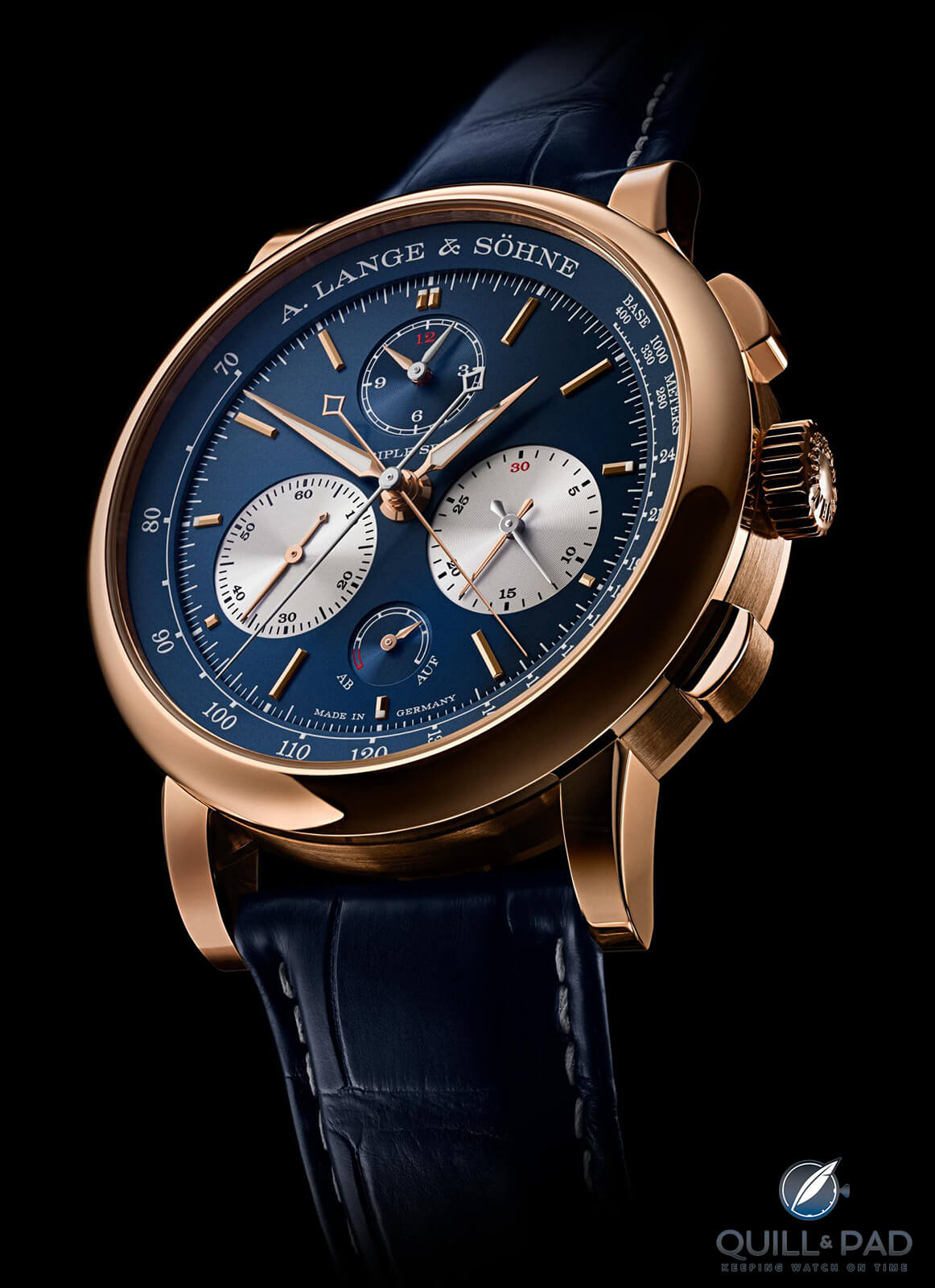
A. Lange & Söhne Triple Split of 2021
And if I wanted this power in its highest form then there is only one possible answer: the A. Lange & Söhne Triple Split, an earth-shattering (and possibly physics-breaking) chronograph that has something incredible up its sleeve.
A. Lange & Söhne Triple Split
In the annals of A. Lange & Söhne history, the Double Split was one of the most widely celebrated releases, both for its mechanical beauty and technical prowess. It introduced the idea of a split-second and split-minute chronograph allowing the wearer to time at least two events lasting up to an hour.
The Triple Split is the inevitable progression, adding a split-hour function to allow timing two multi-hour events up to 12 hours (or longer if you have a notepad). To the non-mechanically inclined, this might seem like a small addition. But it is effectively like building a chronograph on top of three other chronographs (I’ll come back to this later).
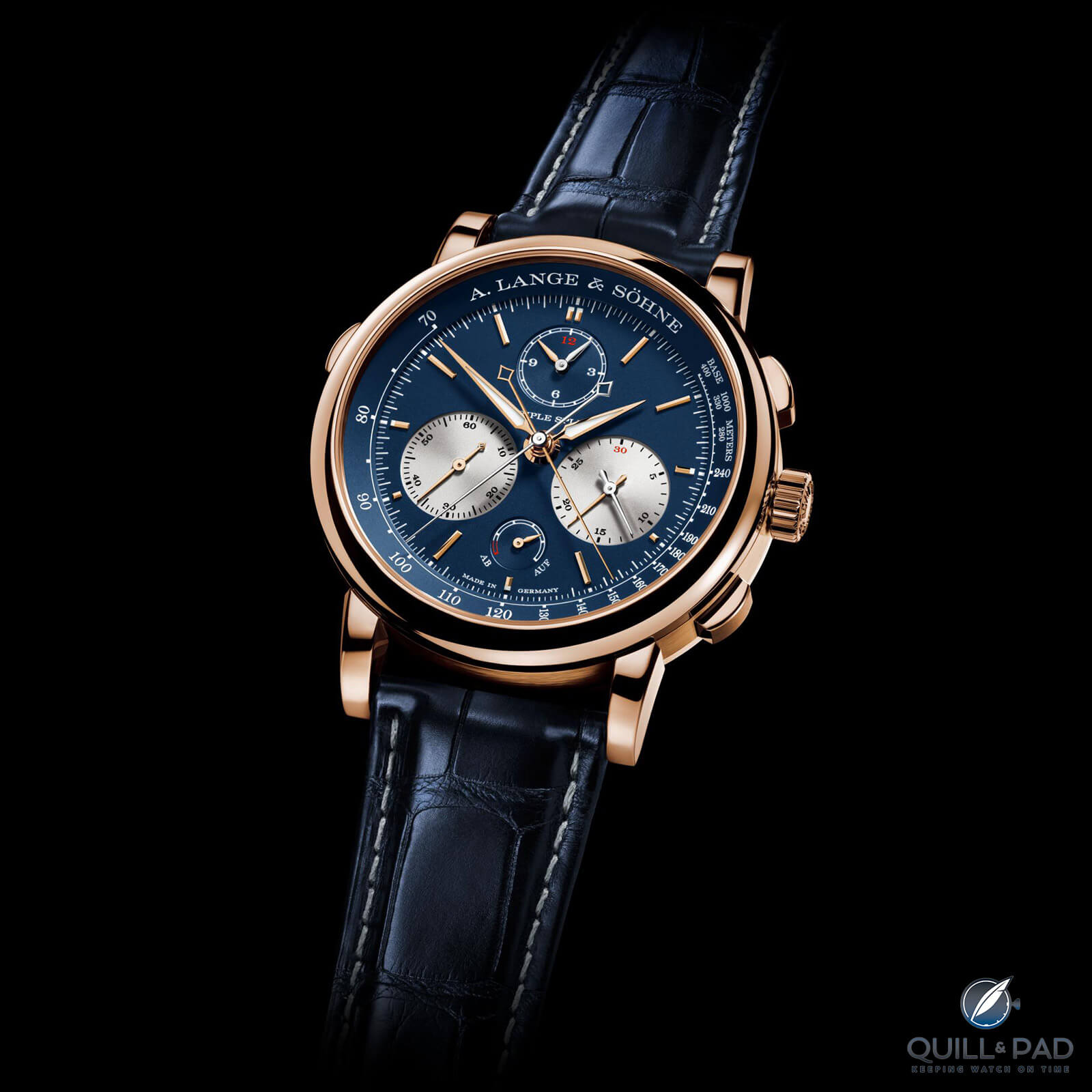
A. Lange & Söhne Triple Split in pink gold
The Triple Split is, at its most basic level, a column wheel chronograph that tracks elapsed hours, minutes, and seconds while displaying the running seconds and a power reserve. It also has a rattrapante feature, commonly known as the split-second function, that allows one chronograph counter for seconds to be stopped while the other continues. In the case of the Double Split this ability was added to the minute counter. The Triple Split adds it yet again to the hours. Now each counter has the ability to track two concurrent times, adding extreme flexibility to a mechanical chronograph.
Like every A. Lange & Söhne timepiece, the dial is still perfectly balanced with clean proportions, making it very easy to read. No matter the complication, Lange’s designers will never let a dial become overly cluttered. And this is a great example of adding features while essentially keeping the same look.
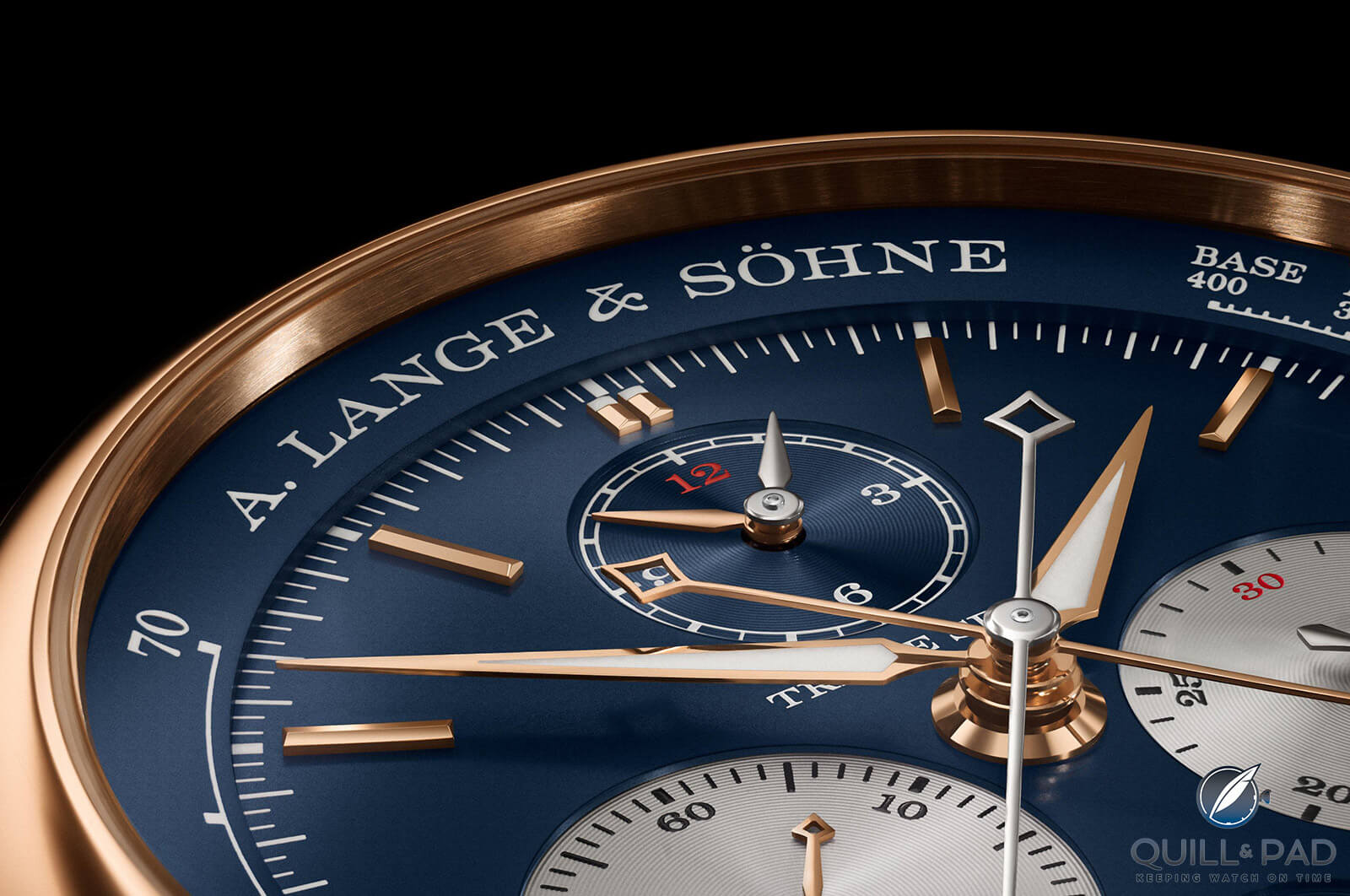
A. Lange & Söhne Triple Split dial details
It helps that the split seconds, minutes, and hours are all coaxial to their dials so that everything can stay neatly tucked away. But what is actually more impressive is that the size of the case and movement didn’t get much bigger with the new Triple Split movement. This keeps the watch as wearable as its predecessor, which I’ll admit is a large watch, but not massive by any means.
Still, it’s holding all that mechanical goodness inside. And that’s the reason we are all here.
A. Lange & Söhne Triple Split Caliber L132.1
The Triple Split movement is a nearly perfect encapsulation of what made me fall in love with A. Lange & Söhne. The craftsmanship of the movements is always top notch with traditional materials, finish, and architecture that any WIS could get lost in. I’ve said as much in the past, but A. Lange & Söhne movements are like miniature cities with skyscrapers and bridges, highways of springs and levers, and a vibrancy that is hard to beat.

Back of the A. Lange & Söhne Triple Split
The Triple Split’s Caliber L132.1 is incredible, and it’s not “just” a Double Split movement with a couple changes but a majorly different movement. Since the power reserve needed to be relocated and an hour counter added, in addition to a third rattrapante mechanism for the hours, the movement was rebuilt, incorporating components and some layouts but reorganized for a new movement.
That movement is a work of engineering art as well since it contains three rattrapante mechanisms, one for each of the chronograph counters.
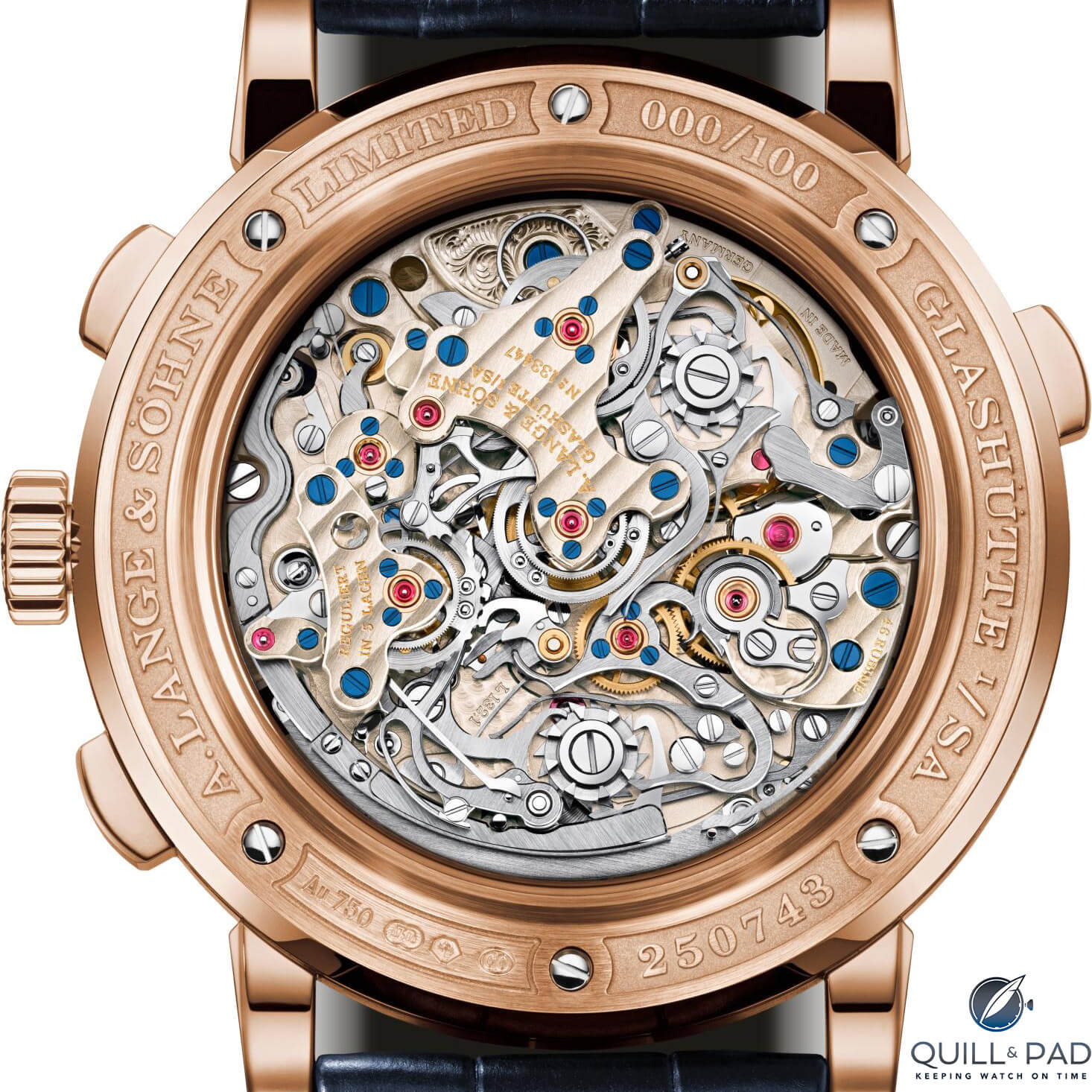
Caliber L132.1 of the A. Lange & Söhne Triple Split
Adding a second one was already a feat when the brand did it almost two decades ago in 2004. The rattrapante mechanism has always been seen as the pinnacle of chronograph engineering since it adds two counters on top of each other and a secondary stopping function, increasing complexity by a fair margin. The dual counters also use very delicate shafts as one is an extremely thin, hollow tube with the other rotating inside.
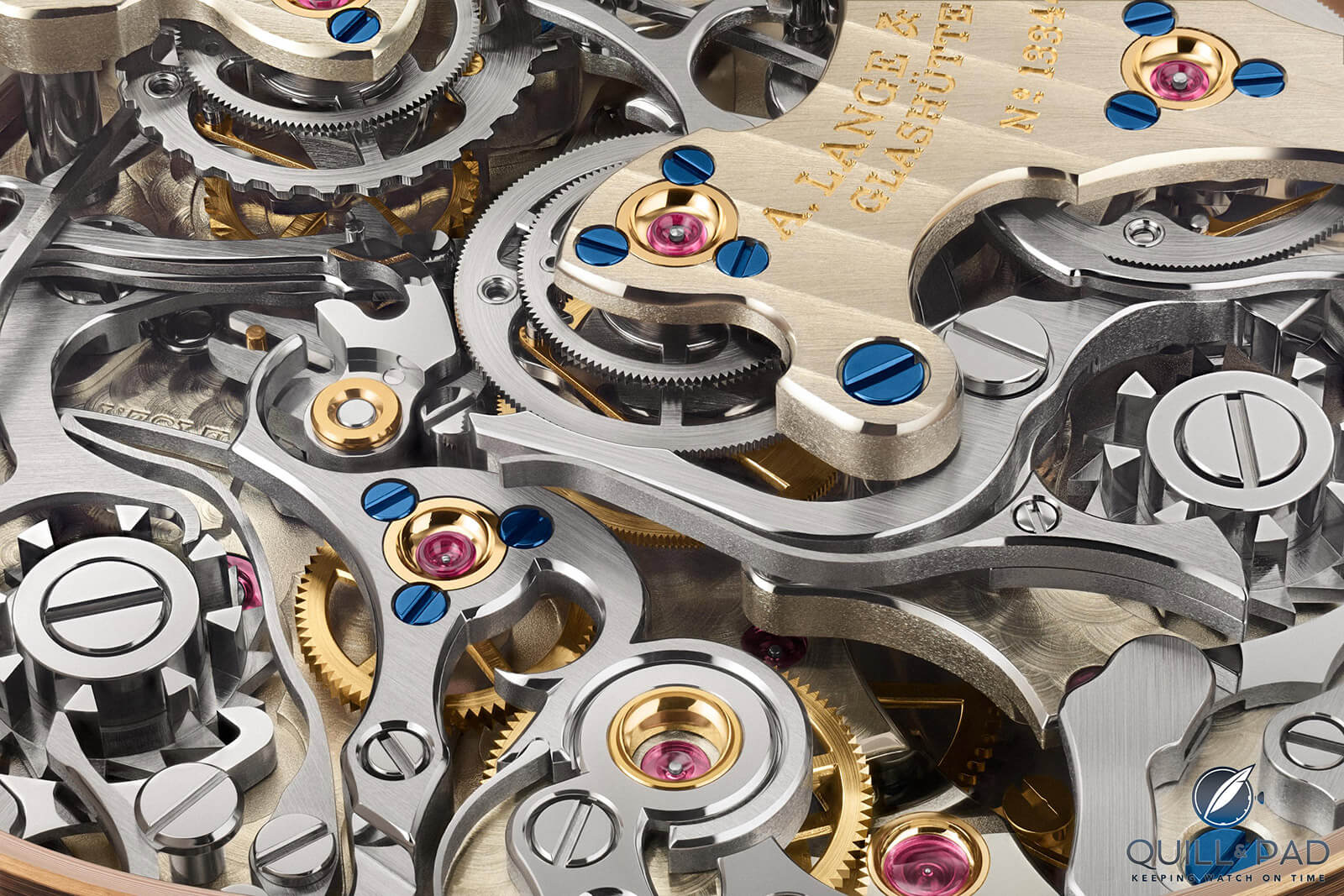
Caliber L132.1 of the A. Lange & Söhne Triple Split
The rattrapante mechanism is a careful ballet of movement, and the development of the Double Split saw the invention of a clever isolating system to ensure the forces were maintained (a rattrapante uses a lot of energy) and that the start and stop of the hands were crisp and precise without affecting the rate. The system was effectively expanded with the Triple Split, which needed to drive three double counter mechanisms that risked putting extra load on the movement.
More power
Thanks to the isolating mechanisms this was no concern, but there was desire to have a longer power reserve than the Double Split’s 38 hours. The Triple Split debuted in 2018 with 55 hours thanks to the ingenuity of the watchmakers at A. Lange & Söhne. The increase was due to work on the balance wheel and the in-house hairspring.
Extensive work was put into reducing the mass, and therefore inertia, of the balance so that it took less energy to keep it oscillating. Since A. Lange & Söhne manufactures its own hairsprings, this allowed a careful fine tuning to match the hairspring to the balance to ensure a consistent rate. The result was a stable balance that used less energy and increased the power reserve by more than 40 percent. And since the increase wasn’t just from a larger mainspring, this helped maintain the existing movement thickness, which only needed to grow a fraction of a millimeter despite the addition of a third rattrapante mechanism.
So a watch with a longer power reserve and an entirely new function ended up being almost the same size, only growing by 0.3 millimeters in thickness and staying the same diameter. As a result, that case holds a miniature mechanical metropolis that mystifies the mind. It’s also the only watch that can mechanically keep track of two separate events up to or over 12 hours, which it has been doing since its launch in 2018.
That’s right, the Triple Split is now four years old. But 2021 saw a new version arrive, this time in pink gold with a subtle blue dial. This couldn’t possibly be any more of a perfect sartorial combination and it shows just how A. Lange & Söhne timepieces are consistently well manicured and tailored in terms of design and proportions. The minute counter and running seconds subdials are a fine silver tone, creating the classic bicompax appearance loved by so many.
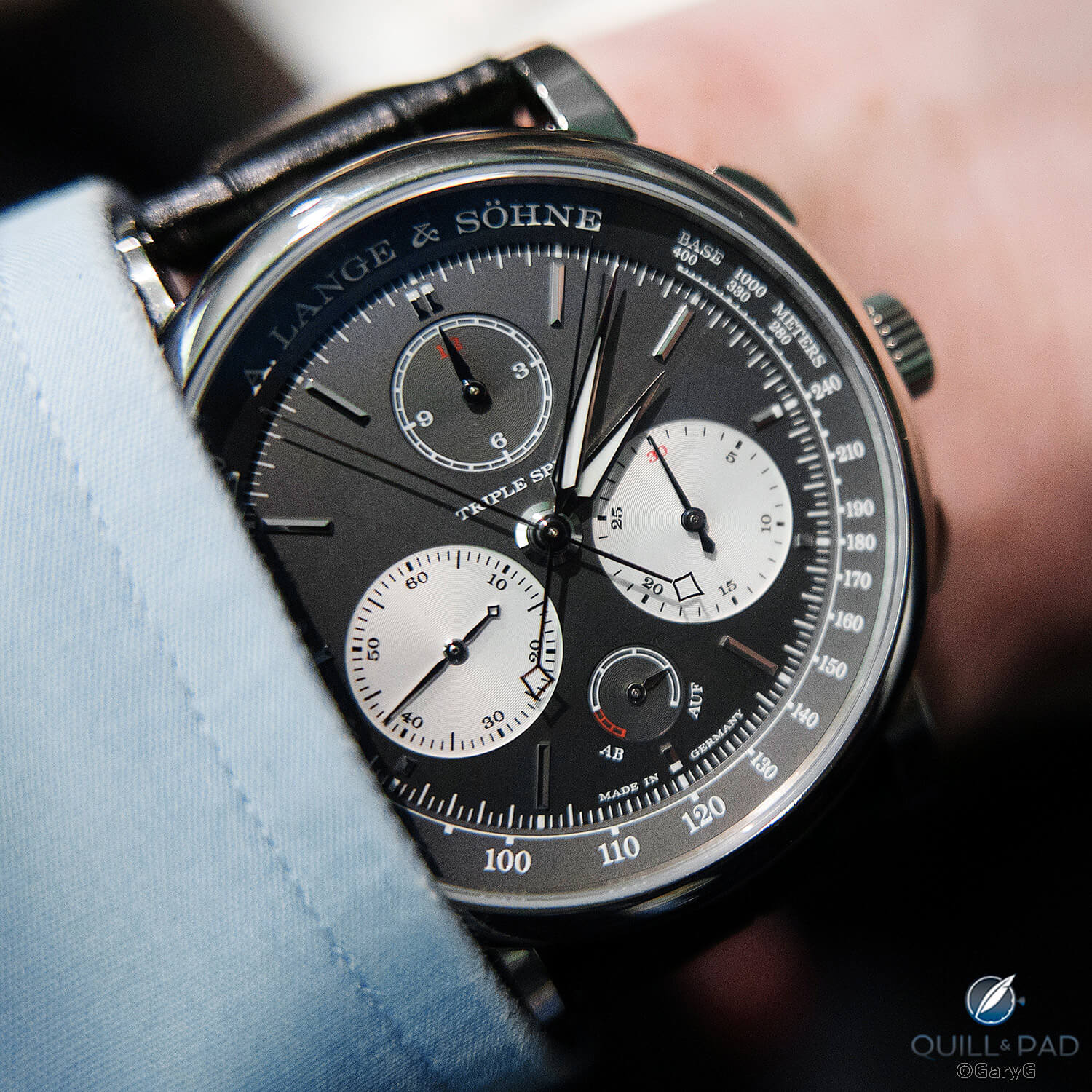
The original A. Lange & Söhne Triple Split of 2018
Given that the original Triple Split featured a medium-grey dial with silver subdials and a white gold case, making it much more monochromatic, the latest Triple Split variation is the attention-grabber of the two. Not that a Triple Split needs to grab any more attention than it already does, but it instantly became my favorite Lange chronograph, edging out my previous favorite, the Datograph Up/Down. The latest Triple Split is just an aesthetic beauty and mechanical powerhouse that likely can’t be beat without something completely unconventional coming down the pipe.
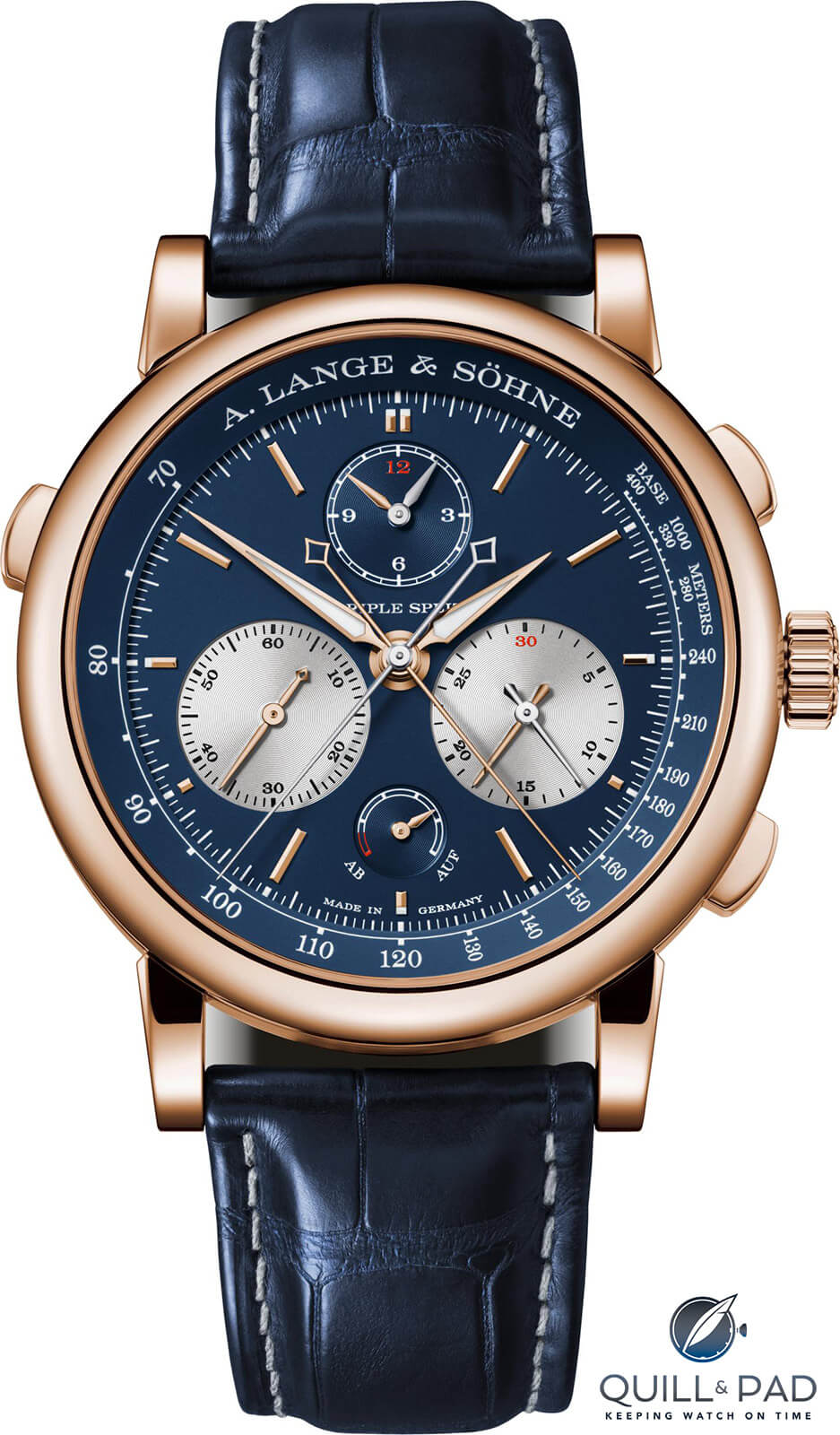
A. Lange & Söhne Triple Split of 2021
One thing is for certain: the A. Lange & Söhne Triple Split is the most tantalizing chronograph available for those who love both mechanics and design. It’s a winner through and through, my only hope is that we can finally travel freely soon so I can head over to Glashütte and get my hands on the latest release for a quick look-see since it’s the only way I’ll ever be able to hold something of this magnificence.
Until I smell the river and the beer once again, I’ll just have to break it down here!
- Wowza Factor * 10.05 The wow factor is 100 percent from the moment you flip that watch over to be astonished by the mechanical metropolis!
- Late Night Lust Appeal * 100.5» 985.568m/s2 A. Lange & Söhne can keep you up all night, and the Triple Split has the power to keep you up for days!
- M.G.R. * 71.4 Do I even need to argue about why this is an incredible geeky movement that you can get lost in for hours?
- Added-Functionitis * Severe I’m going to make a judgment call on this one since it is effectively two 12-hour chronographs with a power reserve in one, so you’ll need prescription strength Gotta-HAVE-That cream for this historical mashup!
- Ouch Outline * 11.8 Taking a chunk out of your finger! Shop safety is always important, even when you are doing things that don’t involve anything dangerous. There are a million sharp edges that can scrape, gouge, or cut you if you inadvertently slip. The pain is worse because it feels unearned, and a bit silly, but I’d gladly take it if that means I get a Triple Split on my wrist!
- Mermaid Moment * The movement, I could get lost in it! Any fan of A. Lange & Söhne knows the beauty of the movements, and this one is top of the list!
- Awesome Total * 899.1 Start with the number of components in the incredible movement (567) and add the total number of pieces slated to be produced to date (200), and finally add the caliber number (132.1) to land on a complicated awesome total!
For more information, please visit www.alange-soehne.com/en/timepieces/triple-split.
Quick Facts A. Lange & Söhne Triple Split
Case: 43.2 x 15.6 mm, white or pink gold
Movement: manually wound Caliber L132.1, 55-hour power reserve, 21,600 vph/3 Hz frequency, assembled twice, German silver bridges and plates
Functions: hours, minutes, seconds; power reserve, chronograph with split seconds, split minutes, and split hours
Limitation: 100 pieces for each reference
Price: $164,400 / €159,400
* This article was first published 16 February 2022 at A. Lange & Söhne Triple Split Chronograph: The World’s Only Watch That Can Time Two Separate Events For 12 Hours



Leave a Reply
Want to join the discussion?Feel free to contribute!